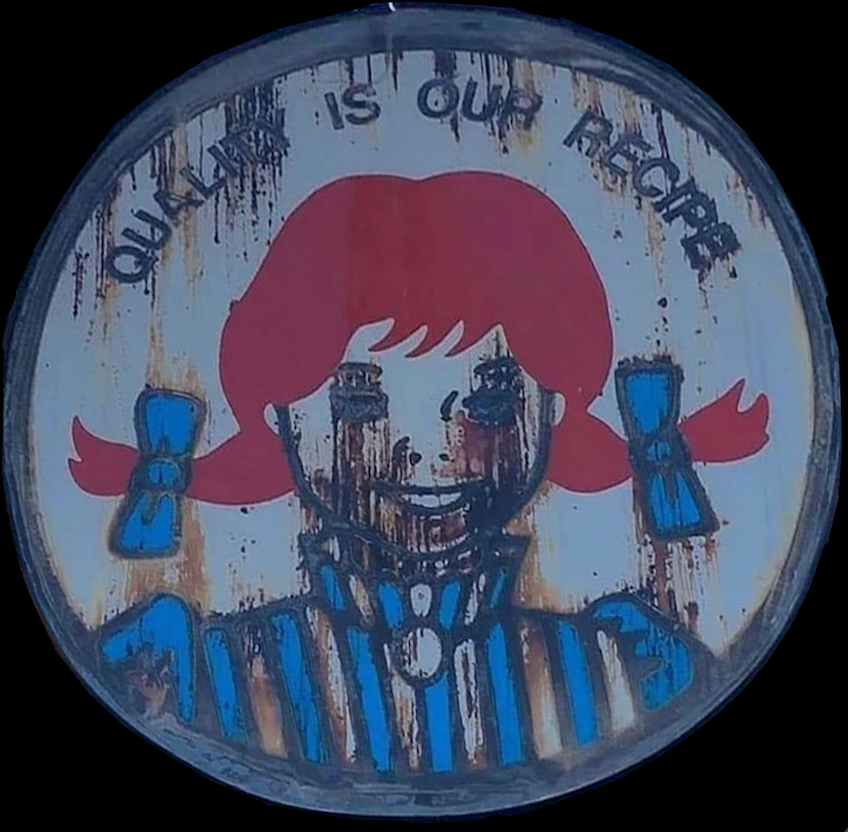So, the wall was selling shirts for insanely cheap prices and I do not understand where they are making a profit.
I got a shirt which should cost 8 dollars for 2.5 and I don’t know if I can just wear them without concern.
Are cheap shirts safe to wear? Idk do they use chemicals which are bad for me? They made this insanely cheap and I don’t know what gives! It all says 100% cotton and its from a trusted brand but the mystery of the price still remains. I need to know before loading up on these things.
Also, bonus question, is white coloring agent more or less harmful than other colors? (Assume the most frequently used coloring agents)
Labour… They save on labour. People that barely make enough to survive keep your prices low.
Yeah, if your cool with slave labor, unsafe & unhealthy work conditions, supporting dictators and almost every other crime under the sun buy cheap non-fairtrade (or similar) shit.
If it’s a shirt, there’s not really labor involved outside transportation.
How exactly do you plant and harvest cotton, transform it into cloth and sew a shirt without labor? In agriculture as well as the textile industry we see horrible working conditions in Africa and Asia where this stuff is mostly manufactured.
We did in the 80s when you last were culture bombed about it. The textile industry is mostly in China now, and mostly automated, including cotton harvesting. Wool has some issues but animal cruelty tends not to register with you people, but poly blend clothing, which is by far the majority of clothing produced, has less human labor than most electronics manufacturing.
mostly automated, including cotton harvesting
Do you have a source for that? As per the last documentaries I saw on this topic, sweatshops are still a huge topic in the textile industry. 10 years ago there was a horrible accident in Bangladesh where more than 1000 people were killed and another 2500 injured after the building of a single textile factory collapsed.
https://en.m.wikipedia.org/wiki/Rana_Plaza_collapse
As per the sources I know, conditions might have slightly (!!!) improved since then but still miles away from acceptable.
More than 60 million people work in the textiles and garment industry across the world according to the International Labour Organization (ILO) – most of them in developing and emerging economies. Yet in many of these countries, production and working conditions fall short of internationally defined environmental and social standards.
https://www.bmz.de/en/issues/textiles-industry
Despite public outrage about substandard working conditions, the global garment and textile industry remains rife with cases of sweatshop conditions, union-busting, gender discrimination, and forced and child labour. Around the world, the rights and safety of garment workers are being systematically neglected.
https://www.somo.nl/our-work/sectors/garment-and-textiles/
Textile workers in underdeveloped countries face labor rights abuses, low pay, long hours, dangerous working conditions, and restricted access to healthcare and education. Gender discrimination is a significant issue, particularly for women.
https://link.springer.com/chapter/10.1007/978-981-97-5341-3_19
Today, the textile sector is one of the largest economic sectors globally in terms of production amount, labor employment, and gross domestic product. At the same time, it is also one of the least sustainable sectors due to its profound negative environmental and social impacts
https://journals.sagepub.com/doi/full/10.1177/15589250231220359
Also it’s the first time that I hear that fashion is manufactured mostly in automated processes. I always heard that it’s highly labor intensive because the styles permanently change, batches are small and complex designs still can’t be automated in an economic way. As far as I know, there are no machines that can produce the numerous different models of shirts, trousers, backpacks, jackets, caps, dresses, skirts etc. that we see in fast fashion.
nah trust me bro it’s robots
Might as well buy stuff at a thrift store. You find quality and good fabric as long as you’re willing to sift. I buy 120-200 dollar cashmere sweaters for 20-25 bucks. I don’t trust that cheap shit either. If it’s cotton, cool, but if it’s not… 2 bucks is hella suspicious.
You also aren’t directly supporting what’s basically slave labor. Thrift is a way of life, as well as a moral philosophy.
When I can’t thrift it, I buy it USA made. I probably even out to what other people spend on new clothes.
I’ve heard that basically all new clothing is treated in formaldehyde, so regardless of the source or the price, it’s best to wash all new clothing before wearing, especially for underwear.
Side note: I would sometimes get discount clothes at Dirt Cheap (sadly they’re going out of business), and I’d usually notice some sort of harmless defect, like the pattern on the shirt would be off center or something, not like I care all that much.
It is made by exploiting people and the enviroment. You are paying atop of the commercial price also a humanitarian and enviromental price. Slavelabor & Ecocide
I don’t understand how 2.5 is comprehensible but 8 is normal.
It should cost a lot more than 8 to make a shirt.
(India) The shirts are made by my mom and I buy it from her (the supply chains are pretty concentrated and short)
deleted by creator
I do not understand where they are making a profit
I think you’re overestimating how much money it costs to produce this stuff. Economies of scale and certain other practices in this specific industry allow retailers to sell stuff at a significant markup even when it seems like they’re giving customers a heavy discount.
But even with relatively large markup percentages, the low price point means retailers have to move incredible volumes in order to make enough money to stay open. So they end up using aggressive marketing tactics to get people to come in the door and start impulsively buying stuff.
My intuition is that those shirts are simply from last season and didn’t sell well enough or they’ve gone out of fashion. The store is using it as an opportunity to put a big 80% off sign out front and whip potential customers into a frenzy. Could also be a scheme to recover costs from online returns. But I really doubt there is anything wrong or even different about those shirts.
Source: worked in clothing retail for a several years
It’s safe to wear but it’s also probably just plastics. Microplastics on skin and other long term microplastics are still not in yet so you could say it’s maybe not as safe as cotton. It’s the same material as more expensive stuff though so the price tag doesn’t really change the safety part.
It’s cotton, all of it is, I am concerned about the dyes they use, will they seep into my skin or something
everything everyone else has said is correct about cost saving, but also sometimes they do sell things at a loss. If product needs to move or it will be thrown out to make room for new things theyll put it on sale at a loss so that they can atleast get something back for it. Its better than taking a complete loss when they have to throw it away, and it can act as a loss leader when you buy other things while there that arent as cheap. Loss leaders are also a way they take a loss on items. For example a grocery store may say milk for 25 cents for a week so people come to buy it and while they are there they get all their other groceries at a normal price which evens out the losses taken on the milk.
I regularly buy Bella + Canvas shirts, which are fairly cheap but nice looking. The trade off for price, is I usually have to replace them every 2 years.
My best advice is to not overdry them, and wash them inside out.
Depends on your budget, really. Is it worth you to get basically ‘disposable’ shirts?
I have had some organic cotton Tshirts last me 13+ years now and they still look great/color, etc. They cost at the time 15$ or: a little over 1$ per year.
I just loaded up on some shirts from Uniqlo because of a comment a friend made on their clothing that they last a long time (10+ yrs)-and she has way better judgement in clothing than I do…for sure. So there basic T is 10€, but I got a deal on the first order through their website & got 10 for 6.50€each.
That being said, I would load up on these and have them in stock at home and get a much use out of them as I could (and when they wear down they’re hobby/work/outdoor etc.)…
Edit: wash in cold water, do not use fabric softeners, and only 1-2 T of detergent, line dry if you can
Cheap doesn’t mean disposable. I have a bunch of shirts that are a decade old and still fine that I got for less than $3 a piece on clearance.
Correct, but OTOH it is a mindset to think of them as such if they end up being garbage quality wise and you don’t get any reasonable length of time and wear with them.
The markup on most things you buy in the store is very high, sometimes 10x or more. That, combined with the fact that product that isn’t being moved is wasting money, means you’ll occasionally see things marked down drastically just to get rid of it. There’s a good chance that they’re still making a profit on it too.
There are also low grade threads/fabrics that consist of shorter individual fibers. They wear out faster.
When in doubt, ask. Only the provider can speak for that. Maybe the shirts are fragile. Maybe they aren’t as reusable. Maybe the provider is foreign and doesn’t understand local customs. I actually just bought some clothes (black sleeveless sweater, white plaid shirt, and faded pants that might as well be a skirt, wearing these now) at the laundromat shop reasonably because I’ve been in a clothes management situation for a while, and I learned most of it in this case is for advertising.









